Last Updated on March 19, 2024 by Michelle
Rendering lard from pigs? It’s way easier than I imagined and produces much more amazingness than I ever knew.
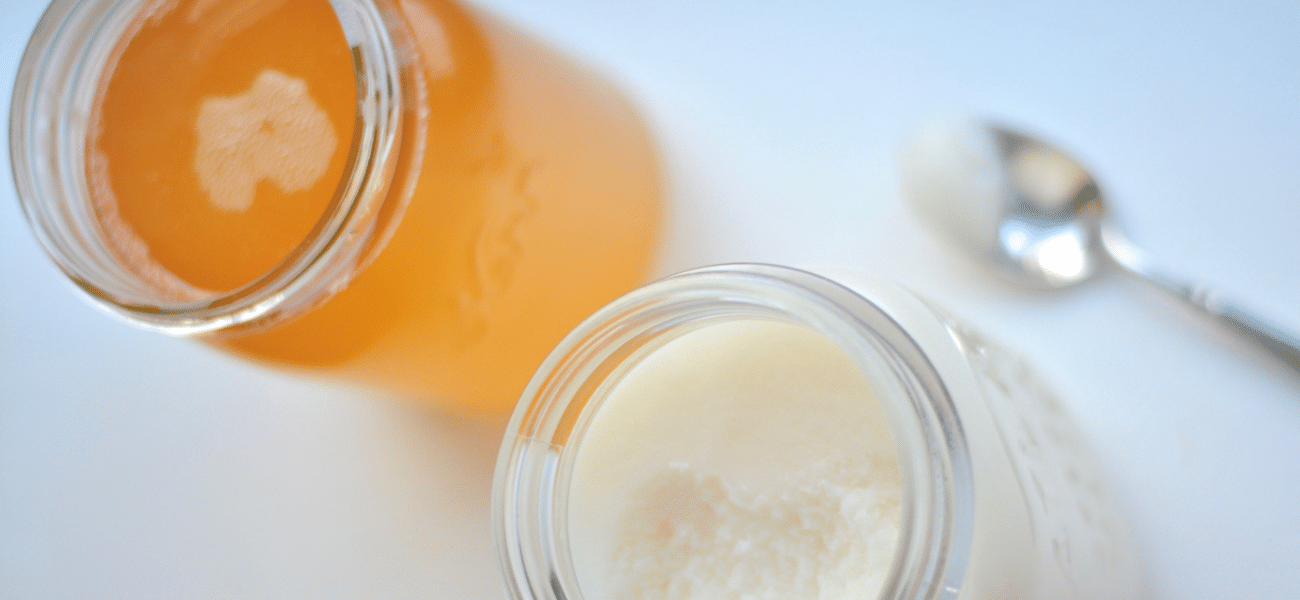
When we brought home our first pigs, I was in it just for the bacon. (Read here for the 6 Things You Need to Know if You’ll be Raising Pigs on Pasture And check out the full scoop about Processing Pigs at Home.)
After stocking our freezers that first fall, I quickly realized there were so many wonderful cuts of pork that I am a huge fan of. In fact, the pork steak and ground pork and juicy pork chops all stand above even the delicious bacon in my mind.
Oh, and the lard. I might possibly agree to raising pigs if all I got out of it was the lard, guys.
Are There Different Kinds of Pork Lard?
While there are 3 varieties of lard that you can source from a pig (go here for the nitty-gritty on the 3 Types of Pork Lard), this article will just talk about two of them, the two that are processed the exact same way. I do store them and use them differently though, but more on that later.
Can You Cook with Lard?
I cook with lard daily. It doesn’t smoke at high temperatures, so it’s perfect for frying. Not to mention the fact that veggies roasted in lard come out wonderfully crisp and delicious. Usually my choice of lard for oiling my skillet is a spoonful out of the jar of lard that sits by my stove.
Can you Bake with Lard?
Lard is amazingly wonderful for baking. It inhibits the formation of gluten, making it the Holy Grail of fat if you’re trying to achieve perfection in a flaky pastry or pie crust. And it has these mammoth size fat crystals that also make it almost impossible to not nail the best biscuits.
For baking (like these amazing chocolate chip cookies made with lard) I use bars of lard out of my freezer. I explain more about how I use all 3 different types of pork lard in this article.
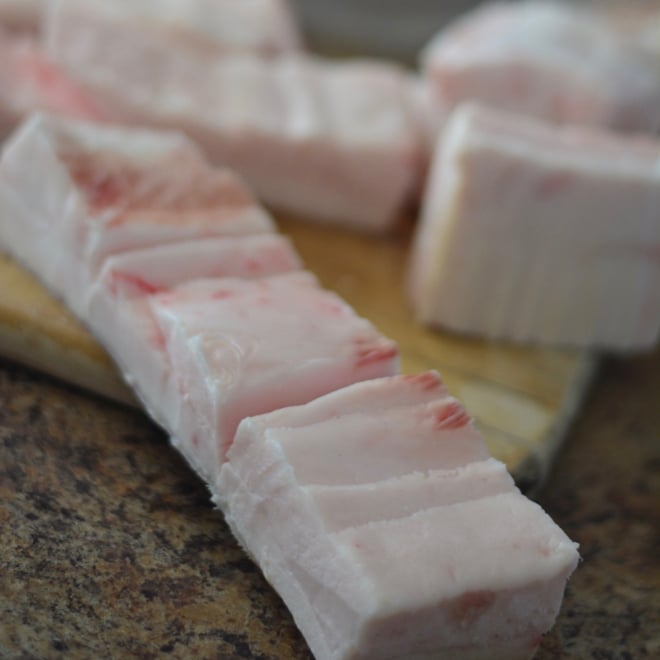

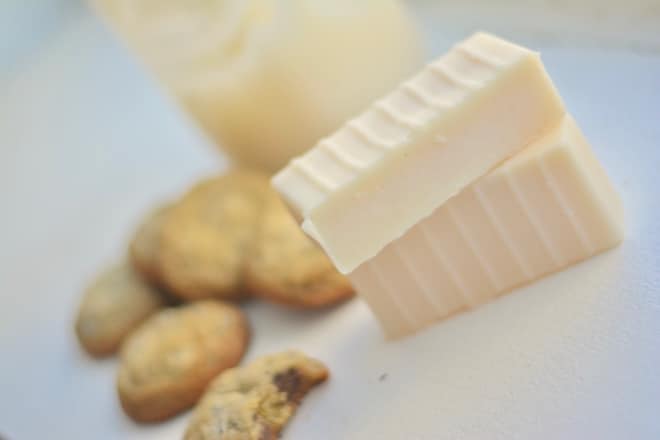
How do you render lard?
While there are 3 types of pork lard, only 2 of them need to be rendered: back fat and leaf fat. While these two types of fat are slightly different, I follow the exact same steps to render them down to lard.
- Remove skin (from back fat) or outer membrane (on leaf fat), unless the butcher did this for you. I find this step and the next one are easiest to do when the fat is mostly frozen, but slightly thawed. With back fat, I will make a few cuts, dividing the strip into 2-3″ long chunks, then remove each chunk from the skin. This is more manageable than trying to remove the full piece of skin in one slice.
- Cut any larger pieces of fat into smaller chunks, maybe 2 or 3 inches long.
- Fill a large stock pot with your chunks of fat. (My stock pot is a 12 quarts.)
- Turn the burner on medium to medium low. (I had read that rendering needs to happen at the lowest temperature possible, so my first attempt at rendering lard i kept the burner on its lowest setting. Two hours later I had about 1 inch of liquid fat in the bottom of my pan. It should never take that long, my friends, and there’s no need for it to. Instead i find it best to monitor the temperature of the liquid lard and keep it at a nice steady temperature of 220 the entire time.)
- Monitor your pot by setting an alarm for every 30-40 minutes and checking it each time the alarm goes off. Stir the chunks of fat and check to see that the temperature of the liquid fat is in the 220 range every time the timer goes off.
- When you have mainly liquid, with large and small chunks floating on top, use a large slotted spoon to scoop out the pieces of fat.
- Carefully poured the liquid lard from your stock pot into a strainer, draped with a thin towel, resting on large bowl.Moved strainer to bowl with pour spout and strained again (after placing chunks in pan of rejects) — good to DOUBLE strain the leaf lard to get it as pure as possible.*
- Carefully adjust your towel so fresh fabric is covering the strainer and move your strainer to a second large bowl.
- Pour strained liquid fat from the first bowl into the second, straining it a second time. The more effectively you strain your lard the better tasting (aka not “porky” tasting) it will be.
- Pour the strained lard into clean, sanitized jars or molds. I use these molds and find there’s no need to grease them.
- IF USING MOLDS: Freeze lard in molds for about 1 hr 15 minutes then pop out and store in freezer-safe container in freezer for years, taking out as needed to replace a stick of butter in baking.
- IF USING MASON JARS: wipe rim of jar after filling with liquid lard and place canning lid on with rim, fingertip tight. Within a few hours the liquid golden fat will turn spreadable-solid and white. The lid should be sealed and you can store your jars of lard in a cool, dark place for years.

NOTES about rendering lard:
- A thermometer like this is invaluable to help you easily monitor the temperature of the liquid and keep consistently around 220-225.
- The chunks of fat that are removed can be cooked into cracklins. I will separate the large pieces to give to our chickens or keep in the freezer as very special dog treats. And the smaller ones become delicious cracklins for my salads in the upcoming week or I use them to make cracklin bread (by substituting cracklins for bacon).
- Using a 12-quart stock pot filled with pork fat, with 3 sets of these molds, I find I need to do this step in thirds. While the first batch of 12 sticks is in the freezer, I kept remaining lard on burner, keeping at 220-ish. I find it takes 1 hr and 15 minutes for the lard sticks to fully freeze in these molds.
- Using a 12-quart stock pot filled with leaf fat yields 36 bars (9 pounds) of lard “butter” a few cups of cracklins, and a 1/2 gallon ziploc bag of cracklins (larger, that i didn’t get crispy, just cooked)
- To release lard sticks from molds, I press each section of the mold from the bottom, turning it almost inside out as the stick pops out.
- While both back fat and leaf fat render into wonderful lards, the leaf lard is considered the creme de la creme. It’s purer, never pork tasting, and a blinding white color. In the picture below you can see the yellow tint to the back fat lard vs. the stark white of the leaf lard.
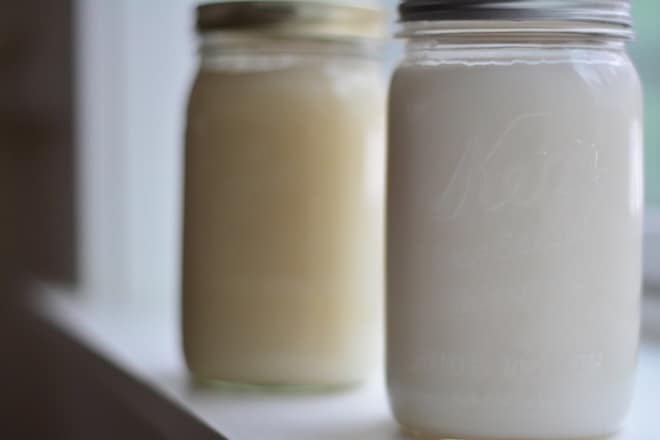
But is Lard Good for you in your Daily Diet?
Yes! Lard is truly a good, healthy, natural fat, loaded with reasons to include it in your diet, but the best reason may be that it’s far superior to the alternative of hydrogenated fats found in all processed foods (or… dare I even say the words… margarine, seed oils, or shortening). More about Why You Should Bake With Lard here.
Is There Any Lard that Doesn’t Have to be Rendered?
You can purchase already-rendered lard from a local pig farmer or reputable online sources (see some below) but never waste your money on the “lard” you can find at the traditional grocery store that has been hydrogenated.
There is also one type of lard–the membrane that surrounds the pig’s stomach–that does not have to be rendered. Read more about caul fat here and check out this video as well:
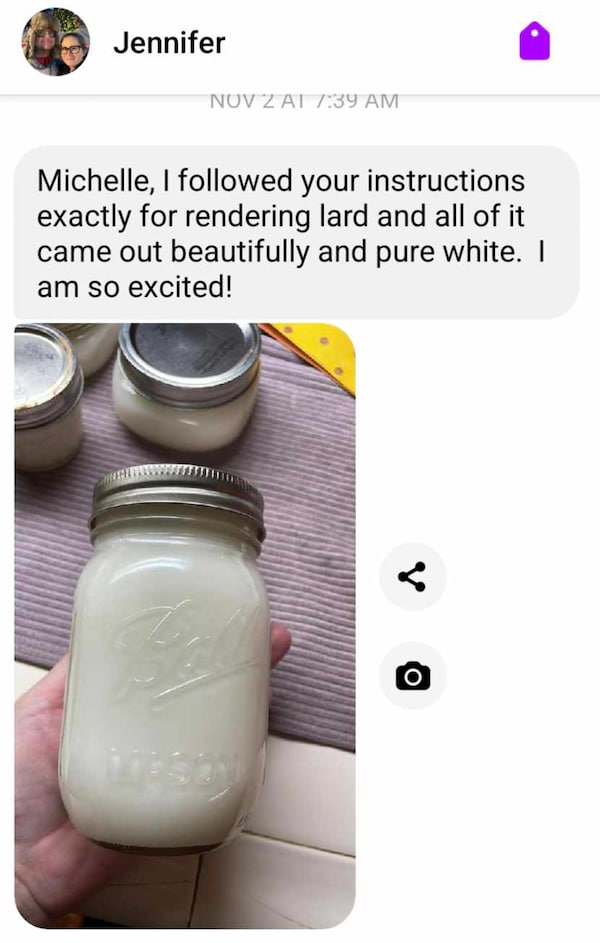
All Your Questions About Rendering Lard
Can I render lard in a crock pot?
Absolutely. I prefer to closely monitor the temperature by using a stock pot on the stove. This creates the purest, whitest lard for me (for back fat as well as leaf fat). But I have used a crock pot with fine success as well. The important thing is to use a low heat and stir it pretty often.
Can I render lard in the oven?
Absolutely. I find that using a stock pot on the stove creates the purest, whitest lard for me (for back fat as well as leaf fat), but there’s no reason to not use the oven instead.
How long does it take to render lard?
There are many variables, but expect it to take most of your day. I tend to start my lard rendering in the morning and am finishing up after dark. While you need to be home and able to check in on the temperature and stir your rendering lard every 30-60 minutes, it is very easy and not time consuming.
What are the benefits of rendering lard?
I think the best benefit of rendering lard is the fact that you can bake with lard. And it’s a fantastic oil choice for cooking on the stove top, since it has such a high smoke point. It’s ideal for all of your high-heat cooking.
Will I mess up if I choose the wrong method (crock pot/oven/stove)? Or the wrong pan?
I highly doubt you will mess anything up. The important thing is to render your lard on low heat and stir it pretty often. You got this.
Is it okay that my lard is changing color in the pan?
As pork fats warm, they turn color (no they’re not burning) and start to smell a little “piggy.” You’re not doing anything wrong.
Should I render on the absolute lowest setting possible?
No. I tried this once and it took forever and a day! Instead, monitor the temperature of your liquid fat with a thermometer like this. Keep your liquid at around 220-225 degrees.
Can I take my lard off the heat and resume the rendering hours later if I need to?
Yes! It’s totally fine to pull your partially rendered lard off the stove while you go run an errand or do a farm chore you have to do. If you can cover it and keep it somewhat warm you’ll save time, since it will solidify if you let it totally cool. The photo below is a pot of lard that I did let totally cool before I reheated it and finished rendering it. (The cracklins are covering the top.)
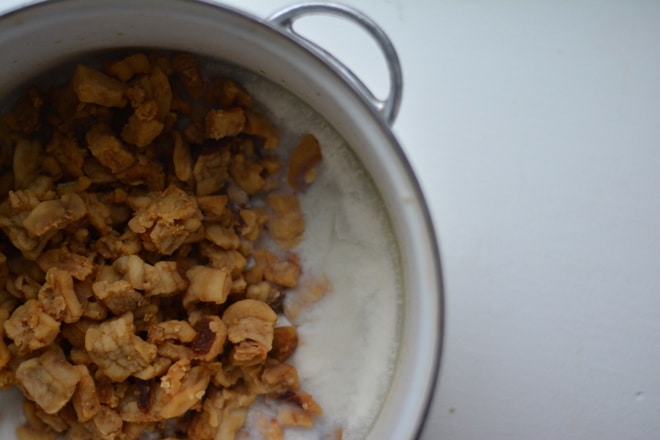
Do the floating chunks at the end have to be tiny pieces before it’s “done”?
No, often my cracklins are 1/4-inch chunks or sometimes larger… the size of salad croutons. But sometimes I’ll process the fat in giant strips (without cutting them up) and my cracklings at the end will be giant size. It’s more productive to start with small pieces of fat, but some days you gotta choose the easier route. My point is that the size of your cracklings at the end is determined by the size of your chunks of fat that you start with.
What’s the difference in lard and tallow?
The main difference in lard and tallow? The fact that lard is sourced from pigs and tallow from cows.
But my good friend, RuthAnn Zimmerman, and I take a deep dive into this very topic right here and explore all kinds of details about both lard and tallow: Good Fats, S7 Episode 4 of the Simple Doesn’t Mean Easy podcast
And listen in to this additional episode on my podcast for more thoughts on why food changed, why we were fed so many lies (like “animal fat is bad for us”), and why we bought into the lie: Why we’ve bought into the lie (S3, Episode 2)
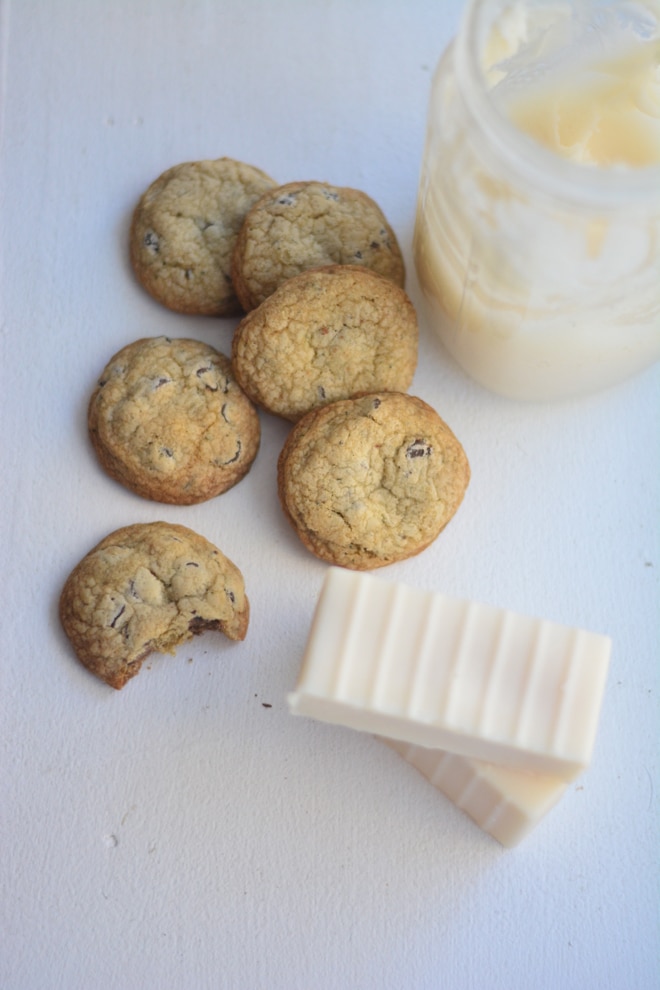
What’s better… lard or butter?
Both butter and lard are excellent choices of fats.
Butter may wind up making some recipes seem oilier in the end, since butter separates when you heat it, into oil and milk. This, btw, is also why you have to keep a nice distance between cookies on the tray that are made with butter. Lard, on the other hand, remains intact when melted. So cookies made with lard don’t flatten and meld into one another on the hot tray.
Butter will also be slightly harder once it has cooled down, while lard tends to keep your foods a little softer. This is why I love making Chocolate Chip Cookies with Lard.
Can it really be used in place of butter?
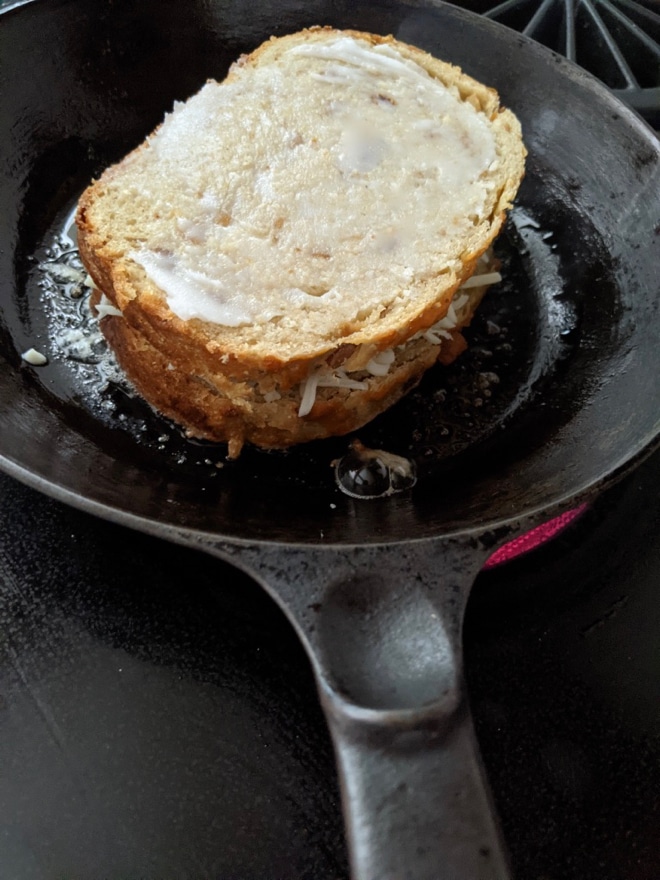
Does lard taste like bacon?
What are some other great fats to use in the kitchen?
Can you Buy Good Lard?
You can absolutely source good lard, either as fat that you can render down yourself, or as already rendered lard. Here are some tips:
- If you live in New England and would like to purchase a whole or half a pig, I would love to chat about how our family farm can help you load your freezer next fall (with amazing pig fat as well as delicious pasture-raised meat). We keep a waiting list, and I am always happy to meet new customers and expand our plans for next year, to make sure your family enjoys high-quality meat next year if I can’t help you today. To message me, hop over to instagram or send an email to michelle(dot)visser(at)outlook(dot)com.
- Find local pig farmers and ask around until you can hopefully find one who either sells lard they have rendered or maybe the raw fat which you can then render yourself. (Or just store away until you use it, in the case of caul fat.)
- Go to eatwild.com and search for a pig farm near you.
- Order online. Seriously. You can purchase this amazing fat, ready to use, and skipped to your door:
Items I Use Every time I Render Lard:
Talk to me!
If you have any questions, leave a comment below. And please tag me on ig to show me your amazing lard @souly.rested.
More Information on This Topic:
3 Types of Pork Lard — everything you need to know about each one.\
Make Delicious Chocolate Chip Cookies with Lard
How I Use Caul Fat (video)
5 Reasons I Don’t Buy Meat at the Grocery Store
Tools I Wouldn’t Want to be Without in my Farmhouse Kitchen
“He satisfies the thirsty and fills the hungry with good things.” Psalm 107:9
Pin this for later!
Click on the image below to pin this post.
Find out why SoulyRested was considered to be one of the Top 20 Must-Read Homesteading Blogs of 2018 and then one of the Top Homesteading Blogs of 2021 as well.
Glance at my Resource Page if you’d like to get a glimpse of all the supplies I use and recommend for everything from gardening, to homeschooling, to chicken care, to nature journaling, to maple syrup making.
I’d love to connect!
To find me in some other neck of the woods, just click any (or every!) icon below:
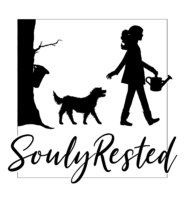
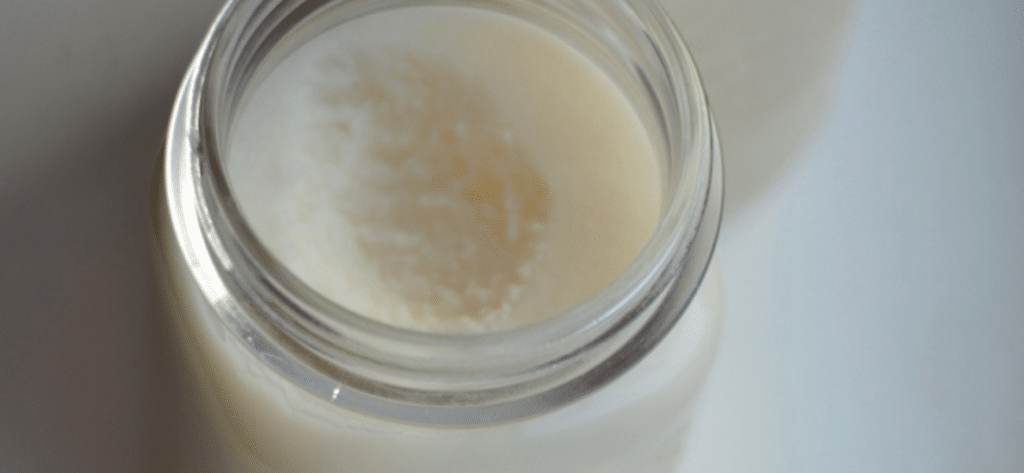
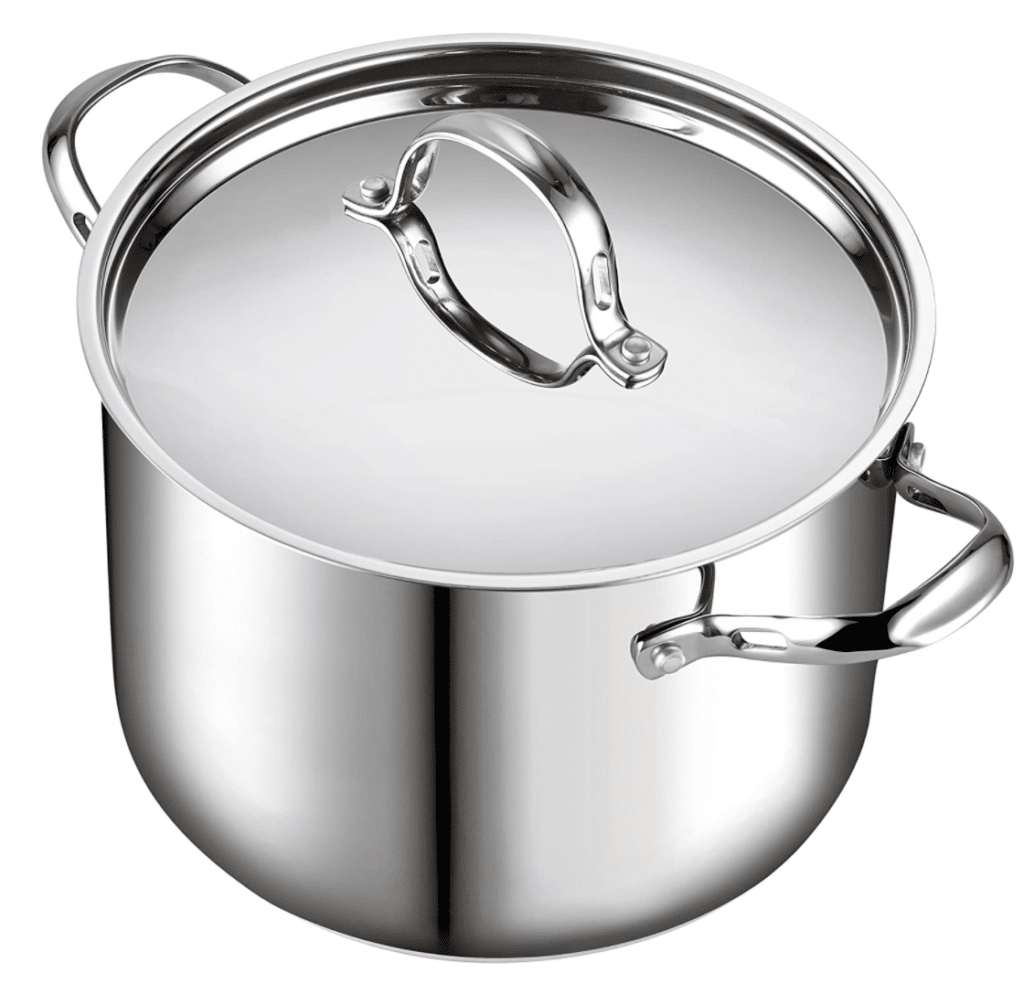
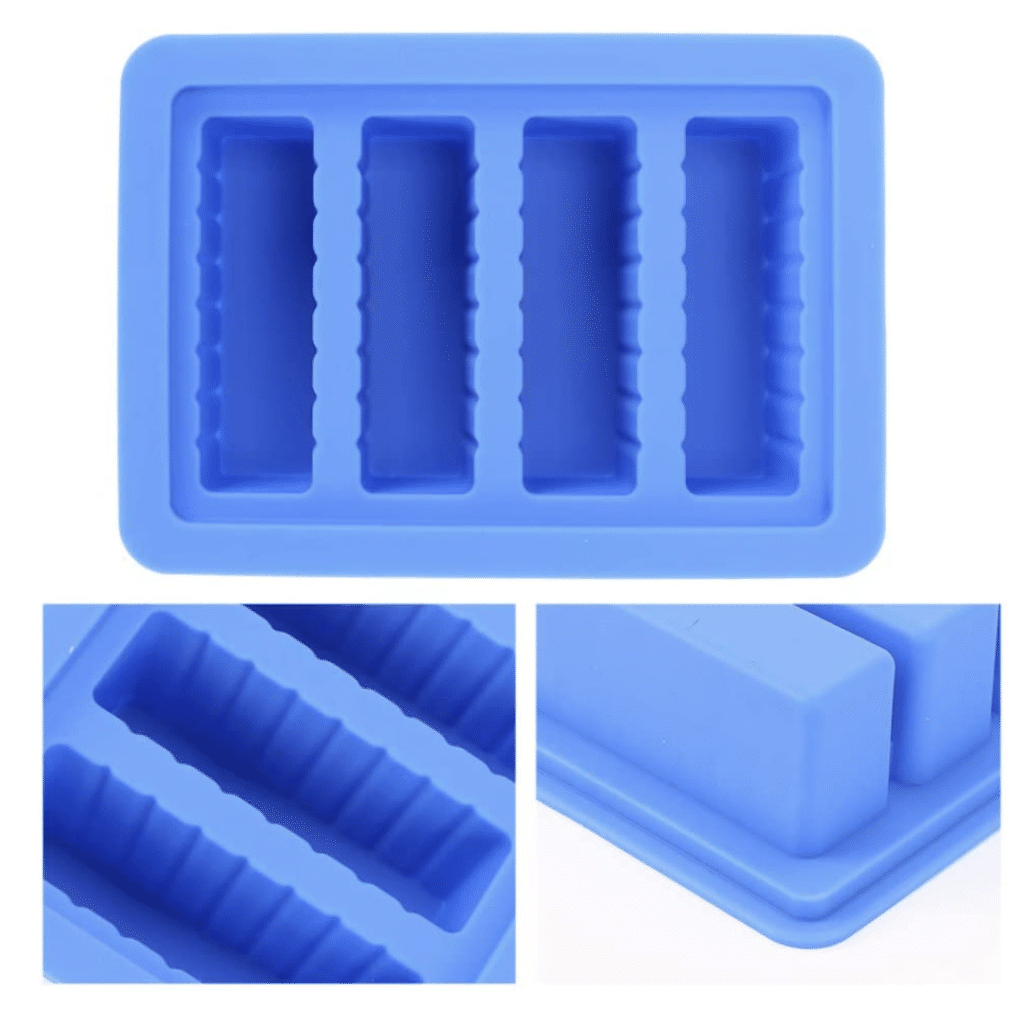
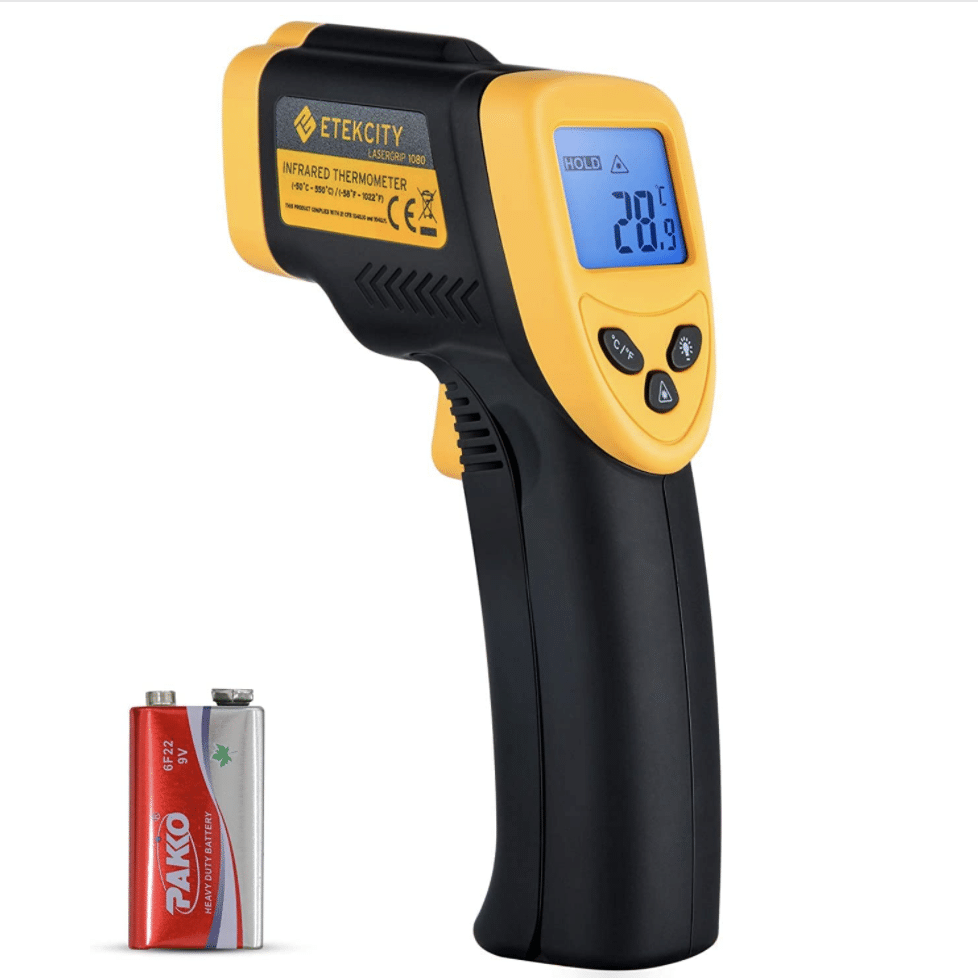

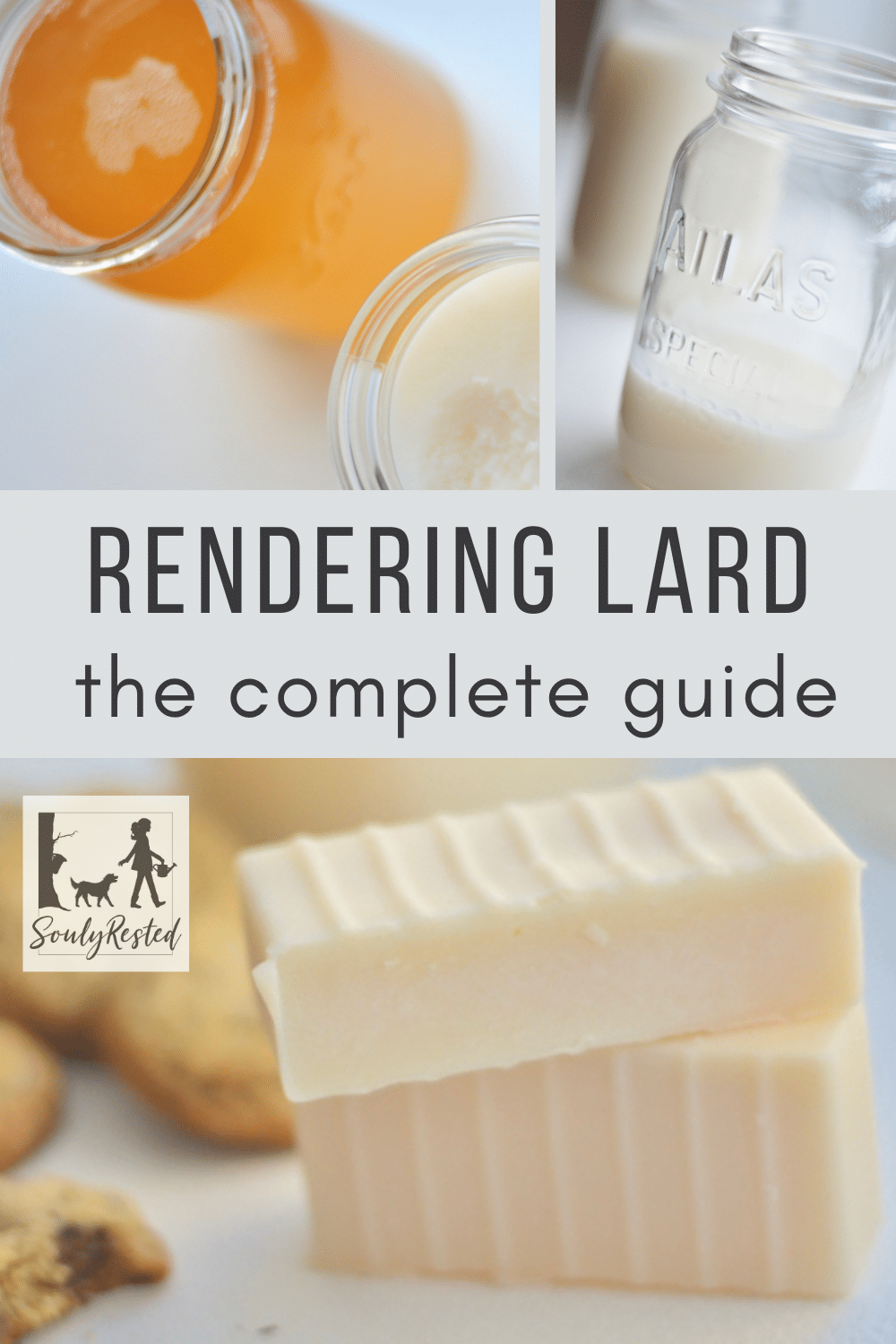





My neighbor raises pigs. I need to see if I can some fat from her to make lard. I remember my grandmother cooking with it. Thank you!
I need to find a local pig farmer, or maybe I should actually raise my own pigs…